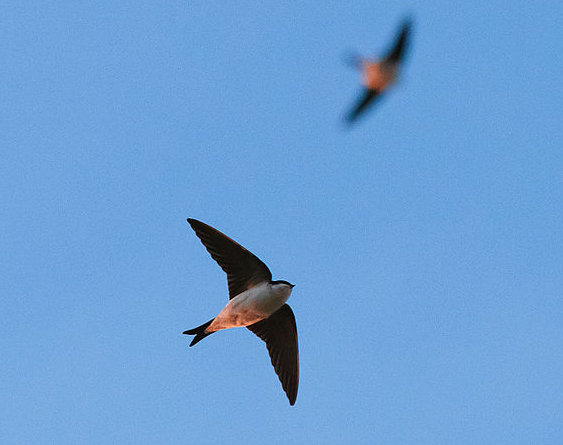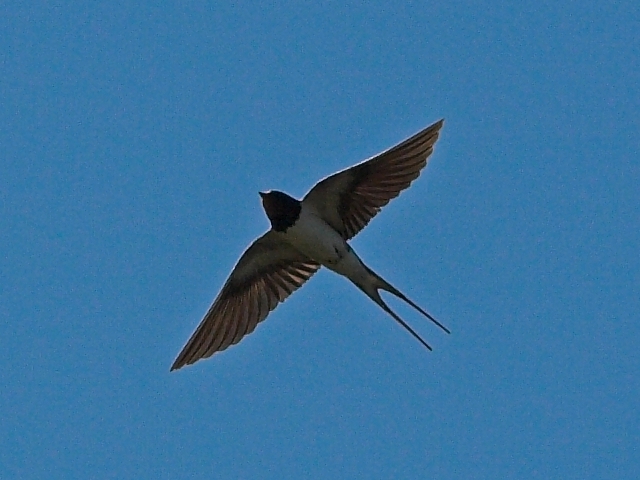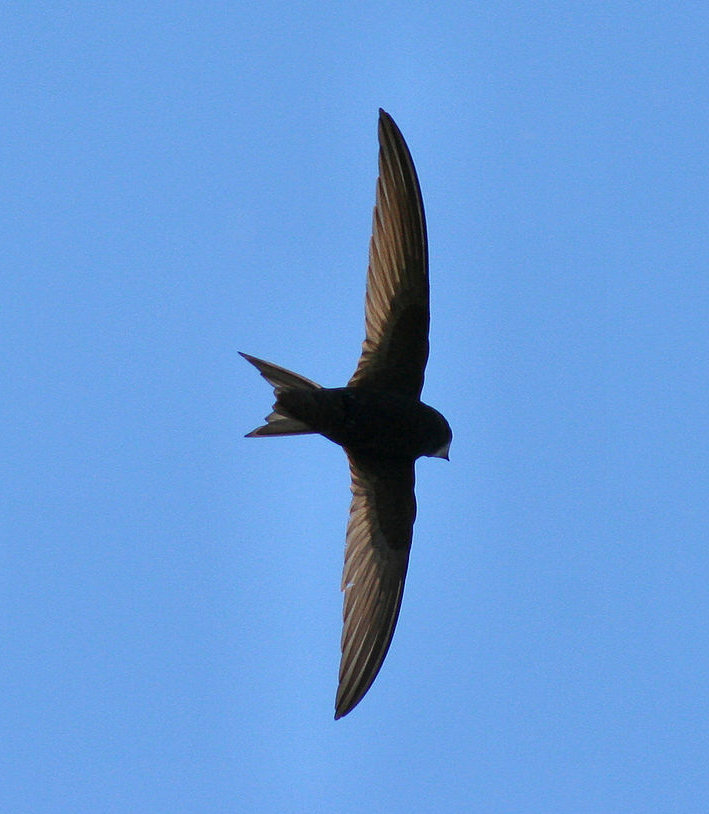Garden Wildlife
Garden Wildlife


"High Fliers"
This page introduces three species that occur rather infrequently in - or rather over -British and Irish gardens. They have in common a specialist niche of feeding exclusively on small flying insects which they hunt down on the wing.
The species concerned are the swallow and house martin, both of which are in the family Hirundinidae, and the completely unrelated swift which is in the family Apodidae, and is related to the tropical hummingbirds. The two families resemble each other through convergent evolution, adapting to the same constraints of almost continuous soaring flight and the catching of tiny insects.
These birds are all summer visitors to Britain and Ireland, and all have become much less common in recent years. The reasons are not fully understood, but could involve climate change and especially a marked decline1. in the number of flying insects in Europe in the summer.
Click on the images below to go to the page for each species:
Reference
1. Møller AP. Parallel declines in abundance of insects and insectivorous birds in Denmark over 22 years. Ecol Evol. 2019;9:6581–6587. Accessible here https://doi.org/10.1002/ece3.5236
Page written and compiled by Steve Head
Swift
Largest bird, black overall, long narrow wings and short forked tail, flies very high, continually calling with a high scream.
Swallow
Medium sized white underside and black throat. Long tail streamers and wings shorter and relatively wider than swift.
House martin
Smallest of the three, underside all white, wings shorter and broader at the base than swallow. More fluttering than soaring flight
"High Fliers"
This page introduces three species that occur rather infrequently in - or rather over -British and Irish gardens. They have in common a specialist niche of feeding exclusively on small flying insects which they hunt down on the wing.
The species concerned are the swallow and house martin, both of which are in the family Hirundinidae, and the completely unrelated swift which is in the family Apodidae, and is related to the tropical hummingbirds. The two families resemble each other through convergent evolution, adapting to the same constraints of almost continuous soaring flight and the catching of tiny insects.
These birds are all summer visitors to Britain and Ireland, and all have become much less common in recent years. The reasons are not fully understood, but could involve climate change and especially a marked decline1. in the number of flying insects in Europe in the summer.
Click on the images below to go to the page for each species:
Swift
Largest bird, black overall, long narrow wings and short forked tail, flies very high, continually calling. with a high scream.
Swallow
Medium sized white underside and black throat. Long tail streamers and wings shorter and relatively wider than swift.
House martin
Smallest of the three, underside all white, wings shorter and broader at the base than swallow. More fluttering than soaring flight.
Reference
1. Møller AP. Parallel declines in abundance of insects and insectivorous birds in Denmark over 22 years. Ecol Evol. 2019;9:6581–6587. Accessible here https://doi.org/10.1002/ece3.5236
Page written and compiled by Steve Head
wingspan 45cm
wingspan 34cm
wingspan 28cm



























